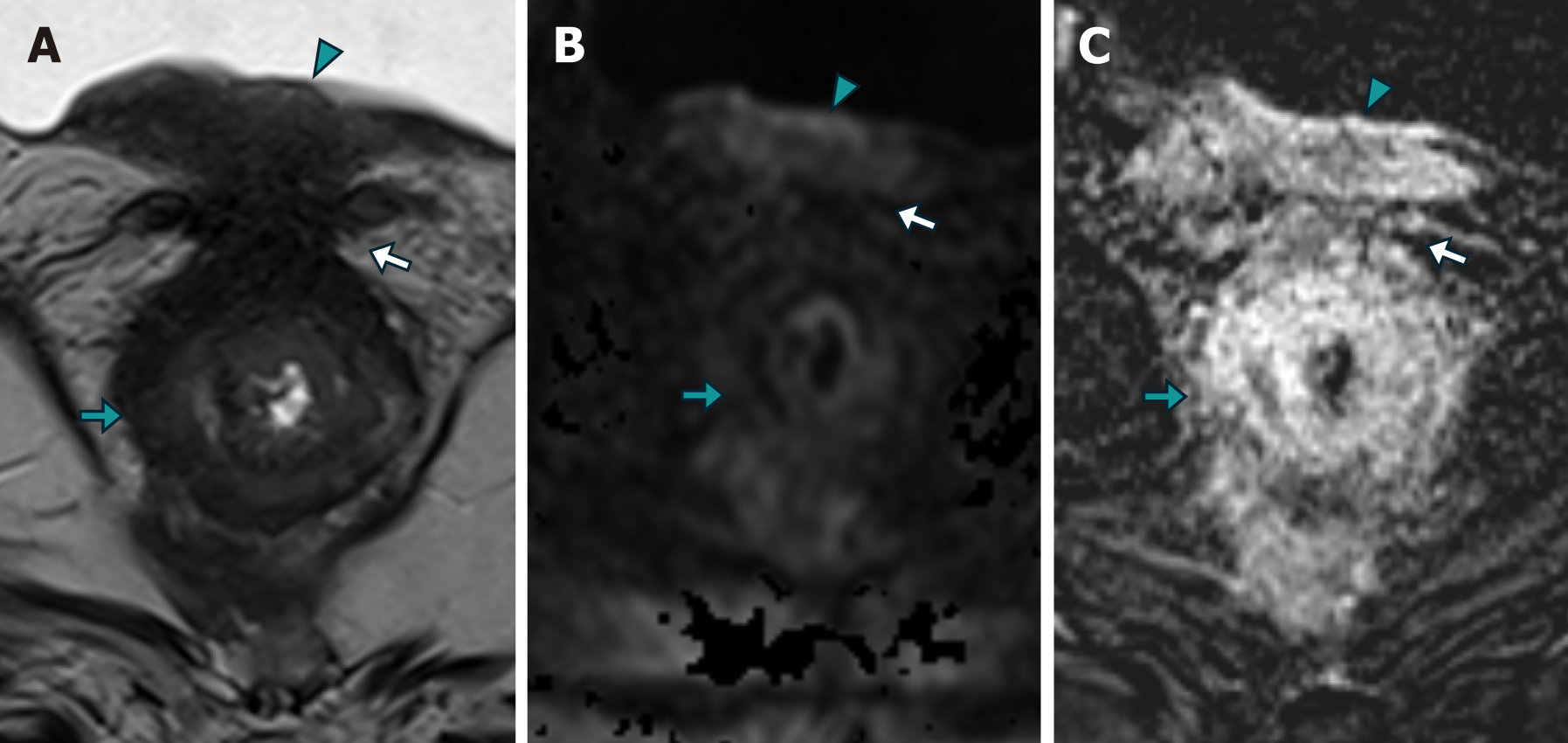Copyright
©The Author(s) 2024.
World J Radiol. Sep 28, 2024; 16(9): 473-481
Published online Sep 28, 2024. doi: 10.4329/wjr.v16.i9.473
Published online Sep 28, 2024. doi: 10.4329/wjr.v16.i9.473
Figure 8 Magnetic resonance imaging findings in case 3.
A-C: T2-weighted turbo spin-echo axial imaging (A), diffusion-weighted axial imaging (B), and T1-weighted volumetric interpolated breath-hold examination imaging with contrast-enhanced subtraction (C). The imaging findings revealed a concentric neoplastic involvement of the rectal wall, characterized by areas of intermediate signal intensity on T2-weighted imaging (A), as well as restricted diffusion on diffusion-weighted imaging (correlating with a hypointense region on the apparent diffusion coefficient map, which was not shown; B), and a stratified enhancement pattern on contrast-enhanced imaging (green arrow; C). Notably, the imaging also showed neoplastic involvement of the vesico-rectal plane (white arrow) and the bladder floor wall (green arrowhead).
- Citation: Labra AA, Schiappacasse G, Cocio RA, Torres JT, González FO, Cristi JA, Schultz M. Secondary rectal linitis plastica caused by prostatic adenocarcinoma - magnetic resonance imaging findings and dissemination pathways: A case report. World J Radiol 2024; 16(9): 473-481
- URL: https://www.wjgnet.com/1949-8470/full/v16/i9/473.htm
- DOI: https://dx.doi.org/10.4329/wjr.v16.i9.473









